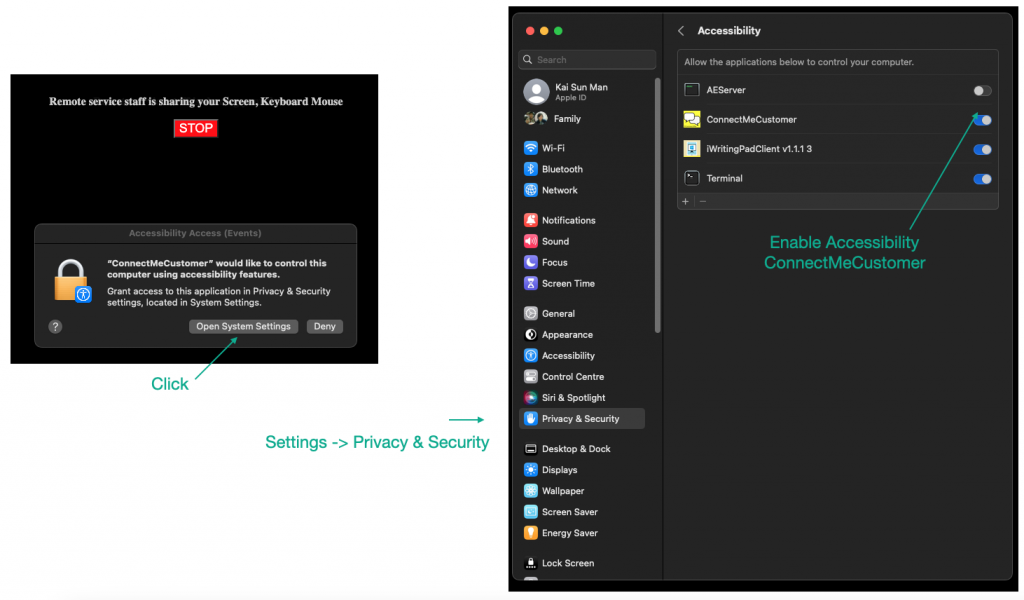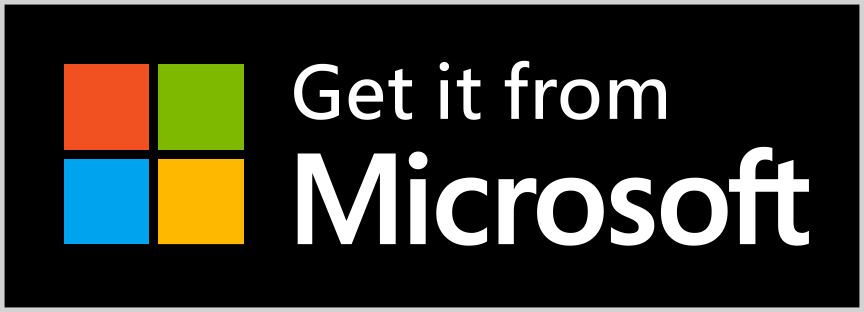Remote control of customer desktop
With ConnectMe Customer app installed on customer PC, agent service staff is able to control customer Windows / Mac OS / Ubuntu desktop including keyboard and mouse. It is the best tools for service staff to trouble shoot the software or hardware issues on the customer local PC.
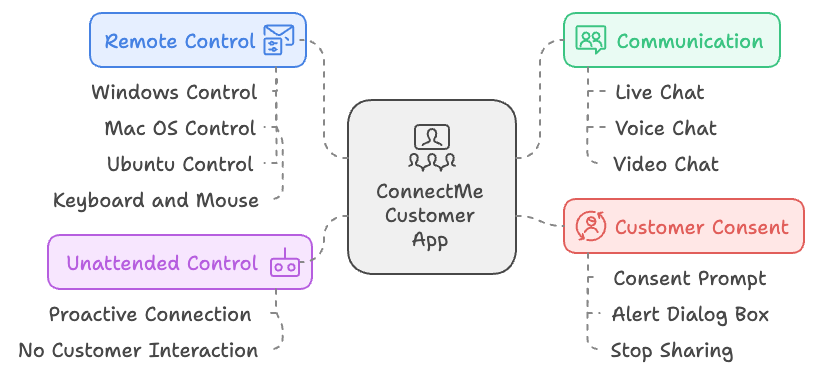
- Remote control of customer desktop including keyboard mouse while having live chat with customer together with voice video chat.
- With the mobile browser (Android or iOS) or apps on Apple App Store or Google Play Store, agent service staff uses fingers gesture to control remote customer desktop mouse and directly types thorugh soft-keyboard.
- In order to ensure the customer consent of sharing local desktop control to service staff, 2ConnectMe will prompt the warning alert dialog box to ask customer such permission. Meanwhile, customer can stop such sharing local desktop at anytime.
- In Unattended Control mode of ConnectMe customer app, agent is able proactively to connect to customer PC, without customer interaction, and remote control its desktop keyboard mouse.
ConnectMe Customer App
In order to share local desktop control to service staff, customer has to install “ConnectMe Customer” app to connect to service staff. They can be downloaded from the App store, e.g. Microsoft Store for Windows, Apple App Store for Mac OS or deb binary for GNOME Linux desktop.
For the details of ConnectMe Customer App, please refer here.
How it works?
Remote control customer desktop can be working under two scenarios.
- In Unattended Control mode, the customer is away from desktop PC while service staff proactively connects and controls the customer desktop.
- In live chat mode, the customer is in either text chat, voice chat or video chat with service staff. Service staff ask customer permission to allow remote control customer desktop PC.
Remote control customer desktop (Unattended Contol mode)
In unattended control mode, customer grants such permission of service staff through initial home screen ConnectMe Customer app as shown below .
Step 1: Enable Unattended Access mode of ConnectMe Customer app
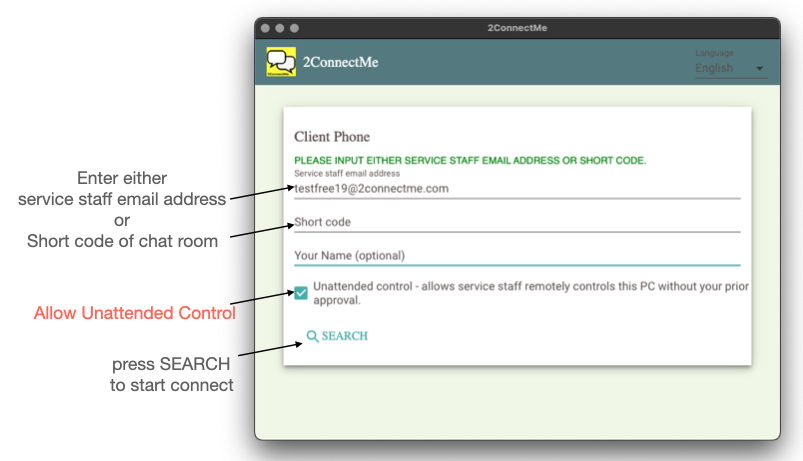
In ConnectMe Customer app above, the checkbox for Unattended Control is to let customer permit remote service staff controlling this customer desktop while customer is away from this PC. The input fileds of service staff email address or short code of chat room above is to specify only those agents registered with this email address or chat room able to control this customer desktop.
In the above screen of ConnectMe Customer app, for example, only agent with registered email testfree19@2connectme.com is able to connect and control this desktop when the customer is away from desktop PC.
After pressing SEARCH button, the ConnectMe Customer app is awaiting for remote services staff to connect at anytime.
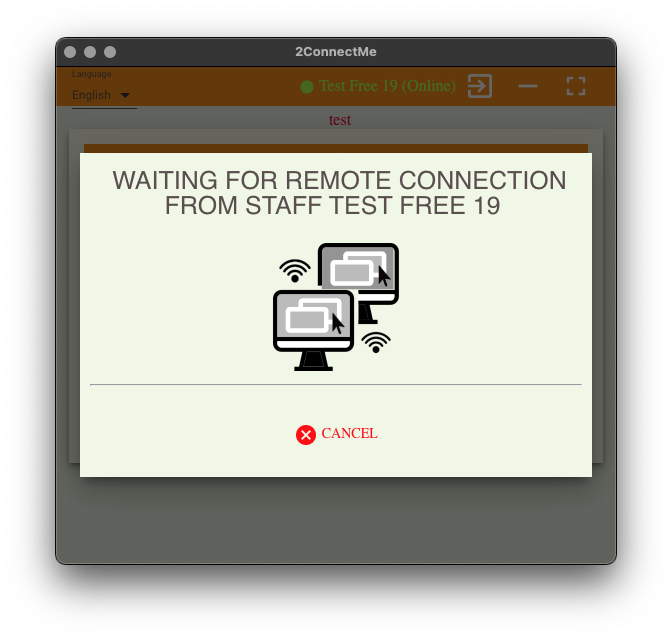
Step 2: Service staff proactively connects Customer App desktop
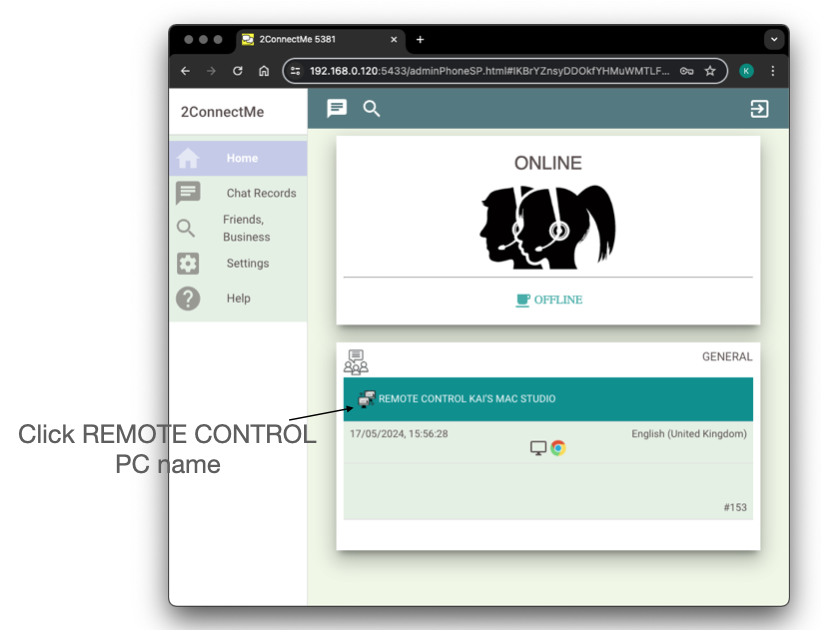
In the ConnectMe Agent app, the ConnectMe Customer desktop is shown and click the “REMOTE CONTROL” button to start control such remote desktop PC directly.
Step 3: Service staff selects which screen of customer desktop to share
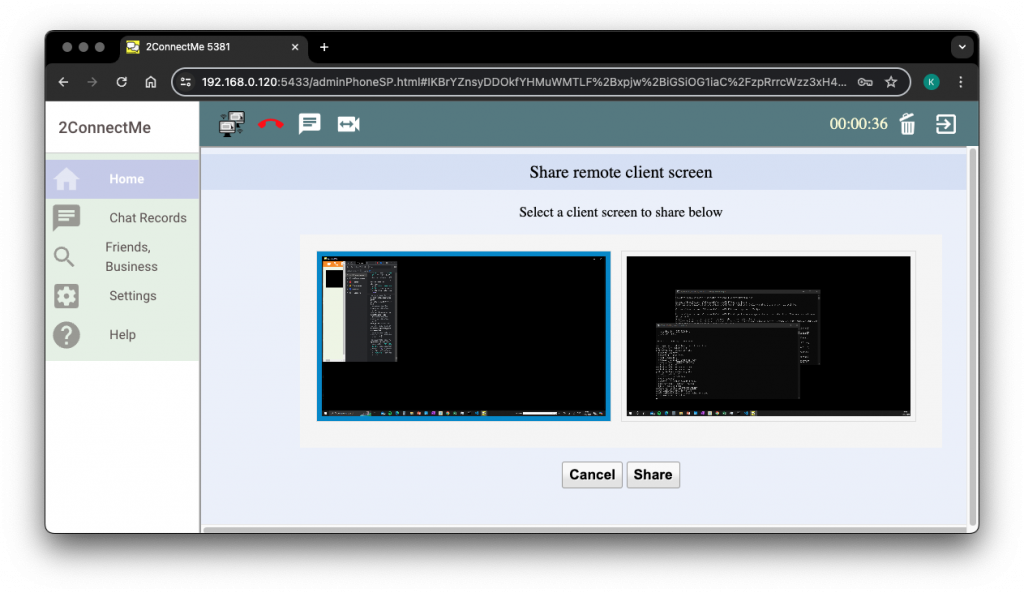
in case customer PC desktop with multiple monitor screens, service staff will be prompted to select which screen to share for remote control as shown above.
Step 4: Service staff control remote customer desktop keyboard mouse
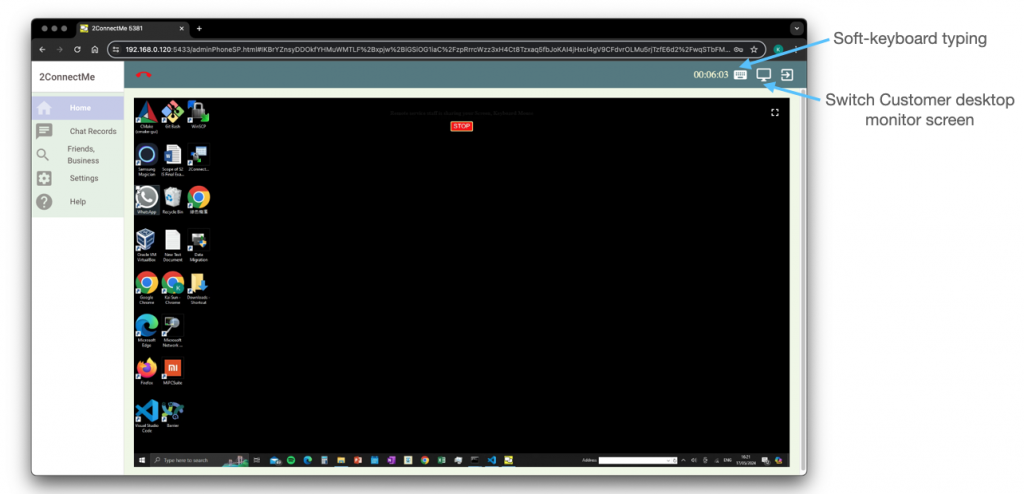
Service staff is able to have full control of remote customer desktop PC. Soft-keyboard typing and switch customer desktop monitor screen is also suported as shown in the app screen above.
Customer desktop PC keyboard mappings
The keyboard layout of customer desktop PC must be aligned with service staff keyboard. Currentlly, only keyboard layout “United States International” is supported in the current release. Details here.
Gestures for controlling remote mouse
in the mobile app, ConnectMe Agent on iOS and Android, genstures are supported to control remote mouse. Details here.
Step 5: Energy saving settings required in macOS
In Unattended Control mode ConnectMe Customer app, the power saving settings in macOS may put the system to SLEEP mode and then turn off Computer Screen. Due to security concerns, macOS is designed such that there is no way to wake macOS computer remotely when the Computer Screen is turned off during SLEEP mode.
In order to accomodate such macOS security concerns and work with our Unattended Control mode of ConnectMe Customer, we recommend the following settings in energy saving mode in macOS settings.
Lock Screen settings on macOS
The option about “Turn display off when inactive” must be “NEVER”
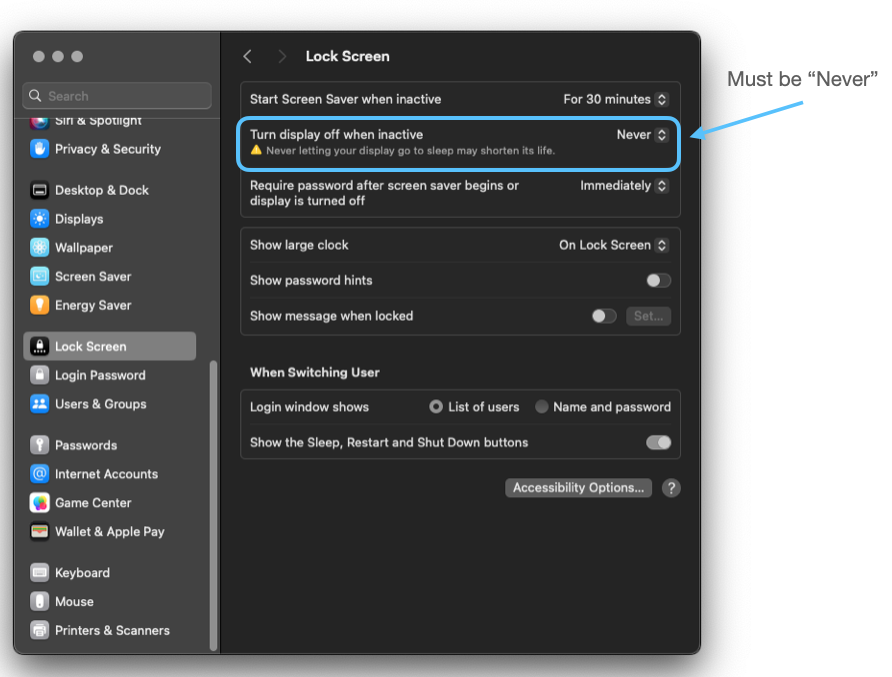
Engery Saver settings on macOS
The option on “Prevent automatic sleeping when the display is off” must be “ON”
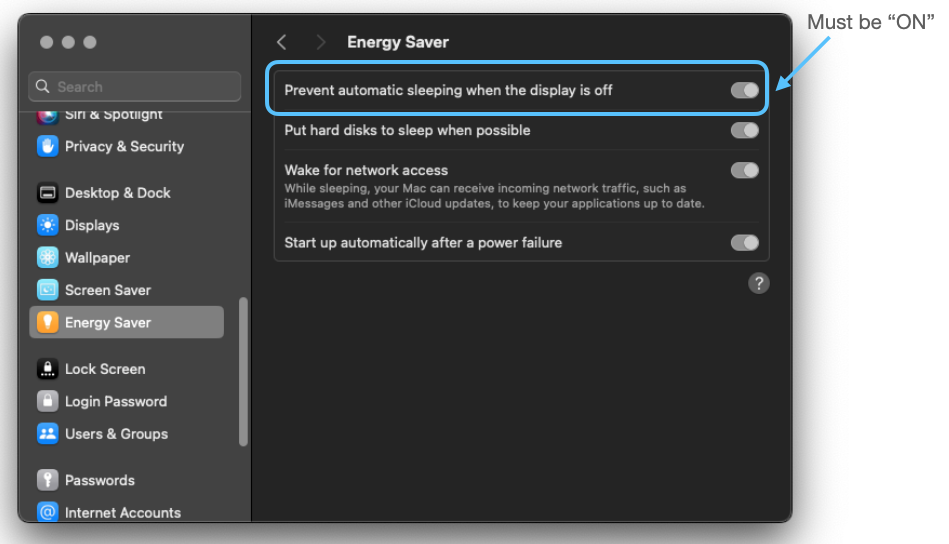
Step 6: Power & Sleep settings required in Windows
In Unattended Control mode ConnectMe Customer app, the power & sleep settings in Windows may put the system to SLEEP mode and then turn off Computer Screen. Due to security concerns, Windows is designed such that there is no way to wake Windows computer remotely when the Computer Screen is turned off during SLEEP mode.
In order to accomodate such macOS security concerns and work with our Unattended Control mode of ConnectMe Customer, we recommend the following settings in energy saving mode in Windows settings.
Power & Sleep settings
Both Screen turned off and Sleep for Power saving must be “NEVER” as shown below.
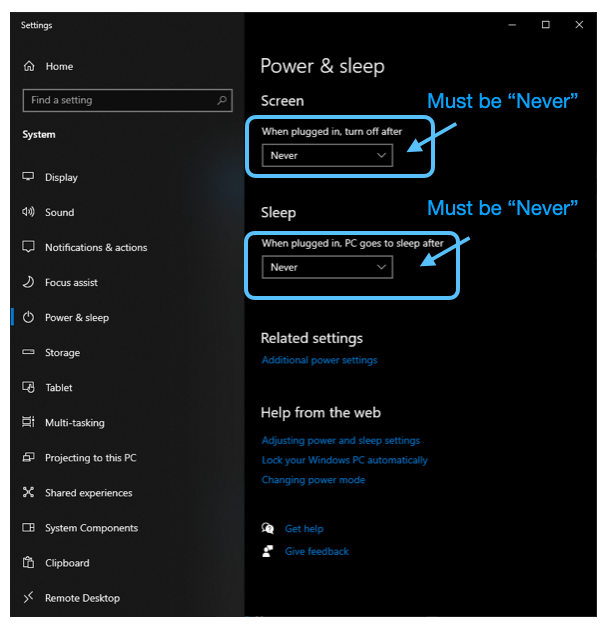
Screen Saver settings on Windows
Screen Saver must be set to “NONE”
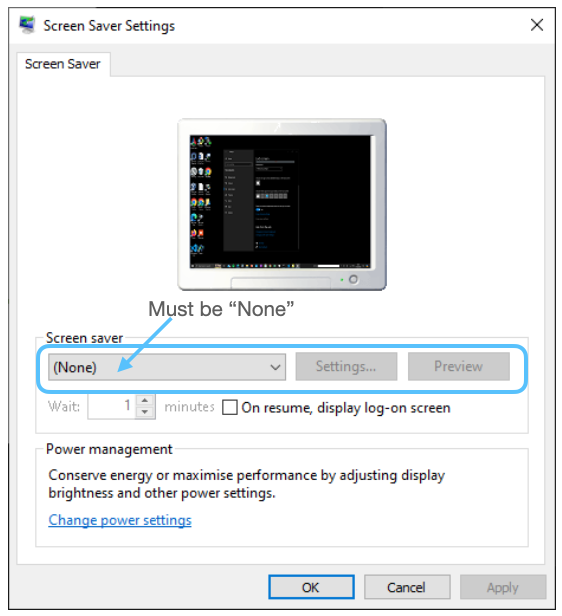
Remote control customer desktop (live chat)
Step 1: Customer contacts service staff
ConnectMe Customer app lets customer to contact service staff either using service staff email address or service staff private chat room short code number. The service staff email address here is the email address used in agent registration of 2ConnectMe service. Please do remember “Uncheck” the Unattended Control checkbox as it is remote control customer desktop durng live chat.
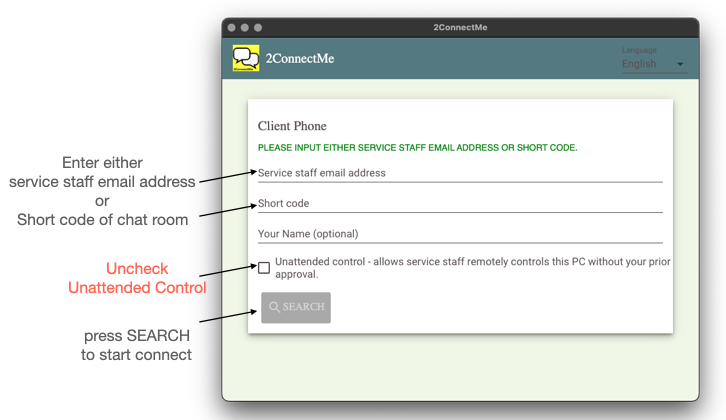
Once 2ConnectMe finds the sevice staff availability, customer clicks CONNECT NOW to start connection to service staff.
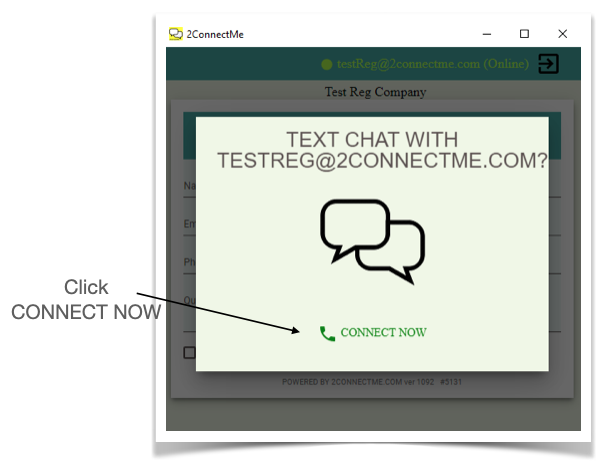
Step 2: Agent service staff requests to control remote customer client keyboard mouse
While service staff gets connected with customer, service staff can press Request Remote Control button for asking customer keyboard mouse control.
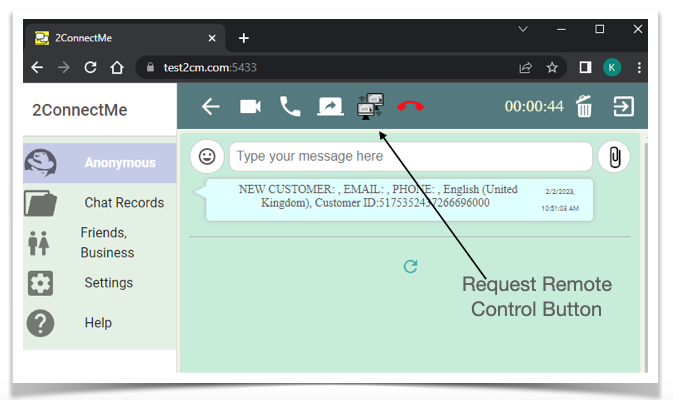
Step 3: Customer Approval on sharing SCREEN KEYBOARD MOUSE
In order to protect customer from malcious contact attack, customer has to approve service staff request for every sharing local keyboad mouse as screen below.
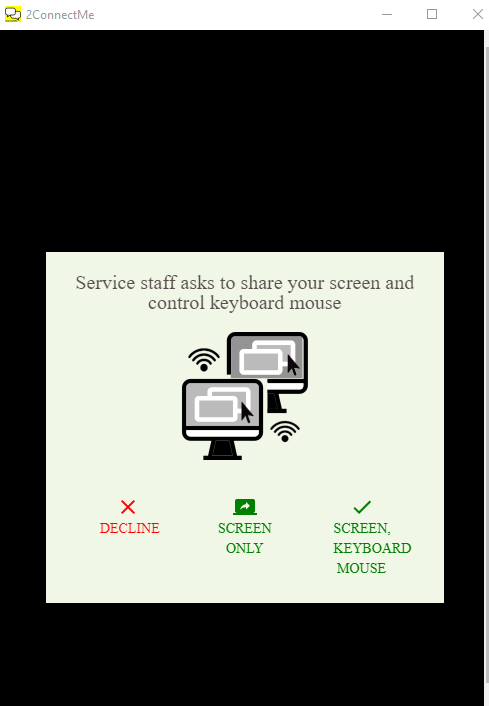
Step 4: Agent starts remote control customer desktop
Remote control customer keyboard mouse
Whenever the agent service staff console is in FRONT or FOCUS, either in browser or an agent app installed, the agent local keyboard and mouse will become the remote keyboard and mouse of customer PC. Agent is freely to control customer remote desktop through the local keyboard mouse.
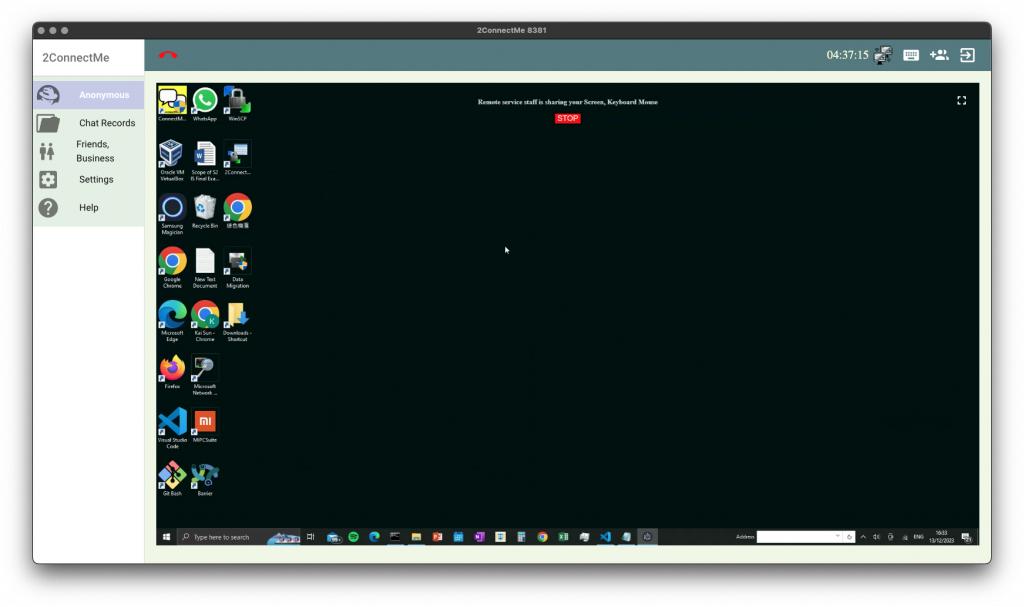
Whenever you find character typing on local keyboard is different from character shown on the customer desktop, it is highly likely due to different keyboard layout between Agent and Customer PC. It is recommended both should be with “United States U.S. keyboard” layout. For Ubuntu, “United Stated U.S. International” keyboard layout has been verified alright. Feel free contact us in case of any keyboard mapping issues found on your local PC.
Accsssory keys mappings
The accessory keys, Control ^, Option ⌥ and Command ⌘ for macOS and windows Ctrl, Alt and Win ⊞ are different. It is necessary to have key mappings when the operating systems in agent PC and customer PC are different
macOS keyboard with “English (United States) U.S.” layout

Windows keyboard with “English (United States) US” layout
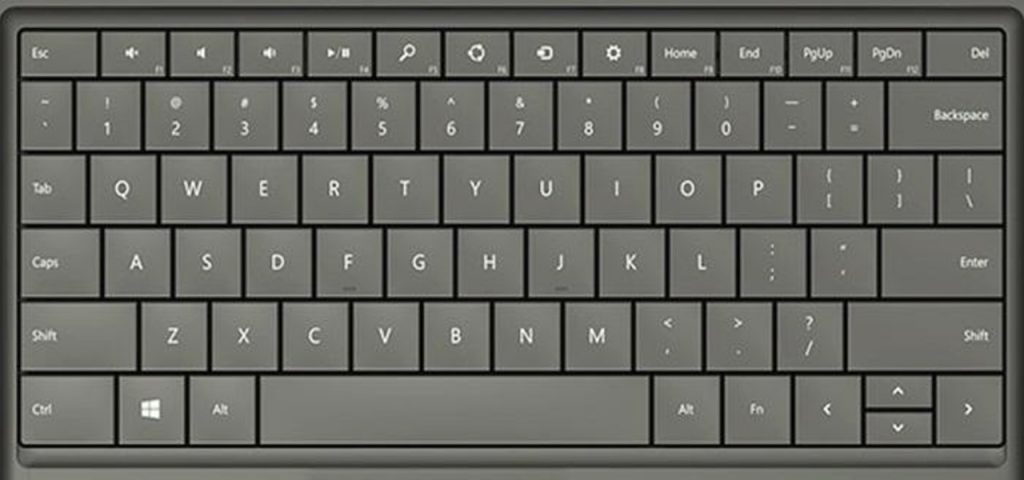
Key mappings between macOS, Windows and Ubuntu
| macOS | Windows | Ubuntu |
|---|---|---|
| Command ⌘ | Win ⊞ | Super |
| Option ⌥ | Alt | Alt |
| Control ^ | Control | Control |
Common global shortcut keys mappings
Shortcuts re-mapping is required for agent console at Windows controlling customer macOS desktop.
Agent console at Windows -> control -> Customer macOS desktop
| Function | Windows shortcuts | macOS shortcuts |
|---|---|---|
| Copy | Ctrl + C | ⌘ + C |
| Paste | Ctrl + V | ⌘ + V |
| Cut | Ctrl + X | ⌘ + X |
| Undo | Ctrl + Z | ⌘ + Z |
| Search | Ctrl + F | ⌘ + F |
| Select All | Ctrl + A | ⌘ + A |
| Replace | Ctrl + H | ⌘ + H |
Conflicts in Windows Key and Command ⌘ Key in shortcut keys
To type Copy shortcuts in macOS of customer, for example, if agent presses Win ⊞ + C to simulate the remote ⌘ + C of macOS of customer, agent local Windows itself will trigger to prompt the undesirable Windows Start menu. In order to avoid typing Windows Win ⊞ key from having such side effects, the shortcuts typed in agent will be re-mapped to macOS shortcuts in the table above.
In other word, agent still types Ctrl + C key for copy shortcuts. 2ConnectMe will remap it to ⌘ + C shortcuts of remote customer macOS. In fact, it is what the shortcut keys re-mappings table illustrated above.
Soft-keyboard on agent service staff console
When agent service staff is working on Windows or macOS, the local keyboard is used as remote keyboard on customer PC. There may be some keyboard shortcuts conflict between agent staff local keyboard and the keyboard on remote customer PC as illustrated in shortcut keys remapping above.
To avoid such conflicts, WITHOUT shortcut keys remappings, soft-keyboard provides the convenient means to have direct typing on the remote customer PC with multimedia and editor shortcuts keys. It is like a local keyboard of remote customer desktop.
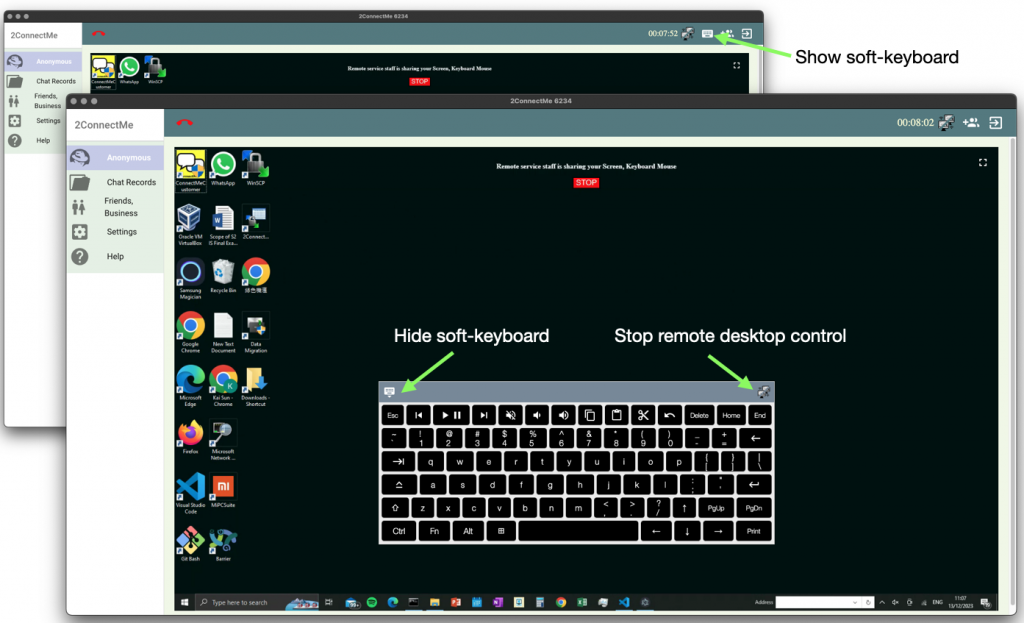
Currently, only “United States US” keyboard layout is available for soft-keyboard. Therefore, the keyboard settings of customer and agent PC must be in “United States US” layout in order for soft-keyboard typing correct characters on customer PC.
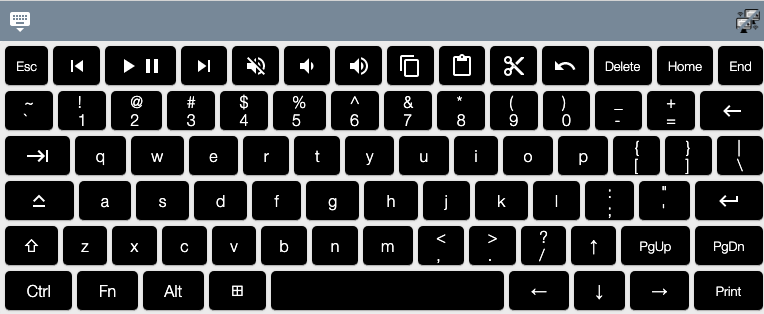
Remote Control Customer desktop from mobile devices
Gestures simulating mouse operations break the barriers in using small screen devices
The agent service staff console on mobile devices, either iOS and Android, are with the following gestures supported. It breaks the barriers of small screen device and empowers agent to control customer desktop even on his own small screen mobile device.
- “1 finger moves” means MOUSE MOVE
- “1 finger taps” means LEFT MOUSE CLICK
- “1 finger taps twice quickly” means DOUBLE CLICK
- “2 finger holds and moves” means DRAG & DROP
- “2 fingers tap” means RIGHT MOUSE CLICK
- “2 fingers drag” means MOUSE WHEEL SCROLLING
- “2 fingers pinch” means ZOOM OUT screen (Only supported in iOS)
- “2 fingers spread” means ZOOM IN screen (Only supported in iOS)
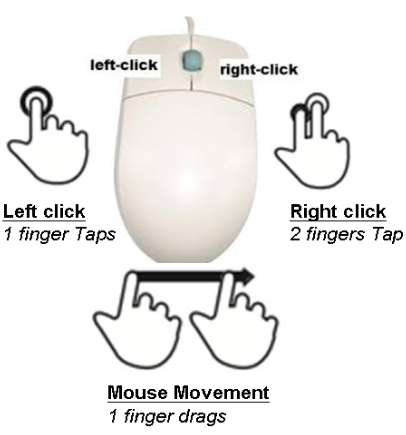
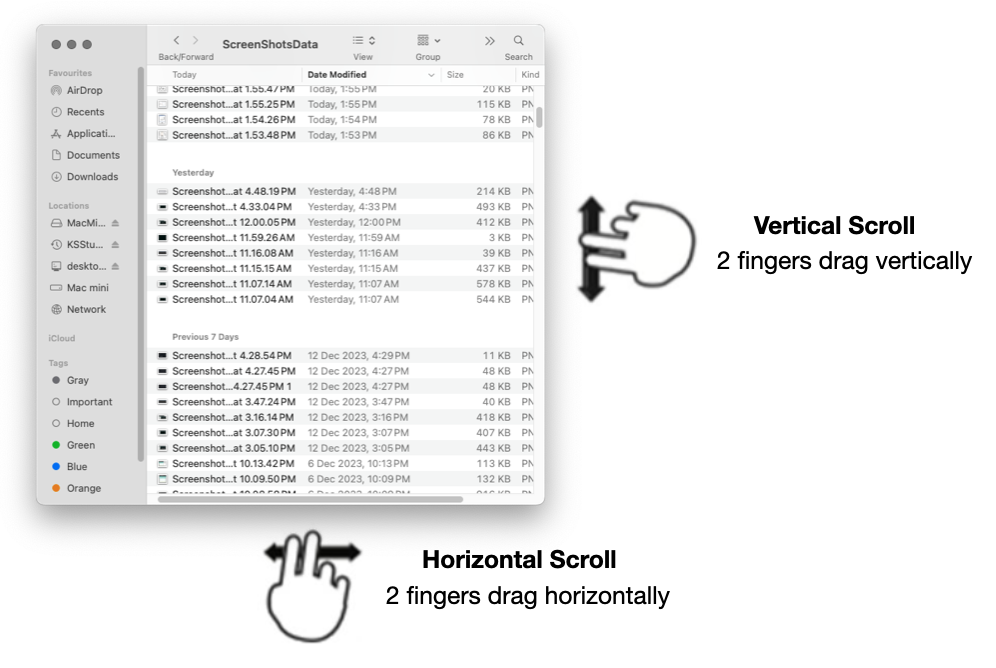
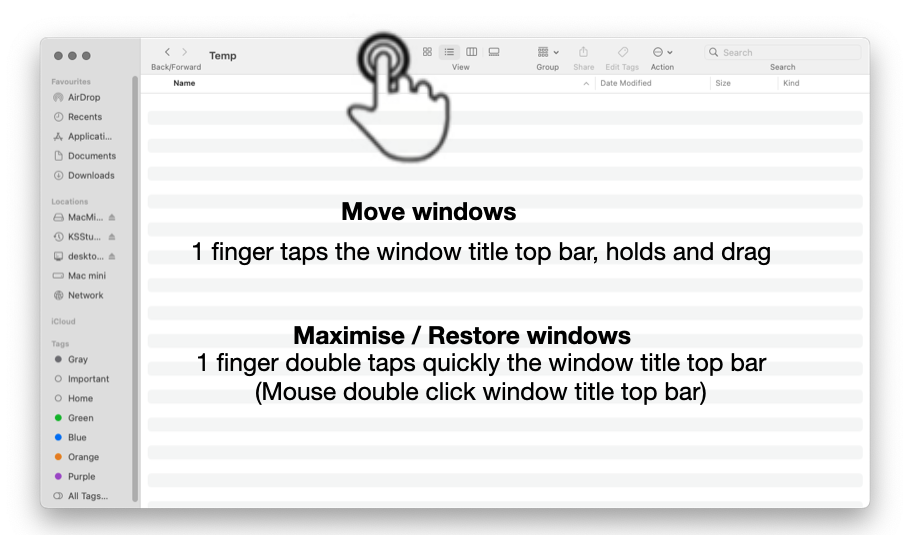
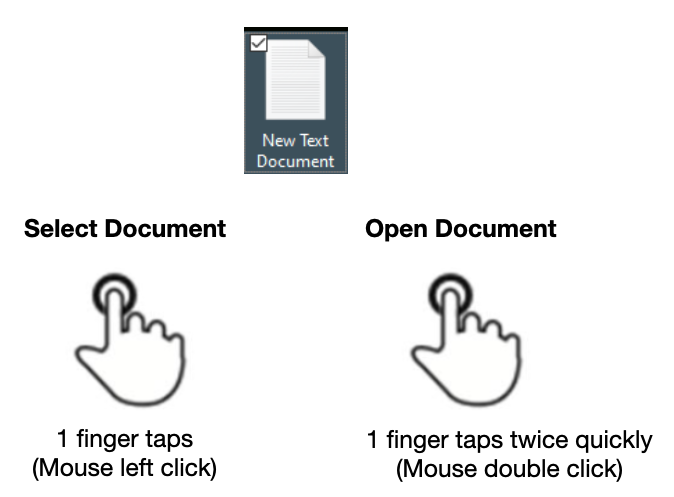
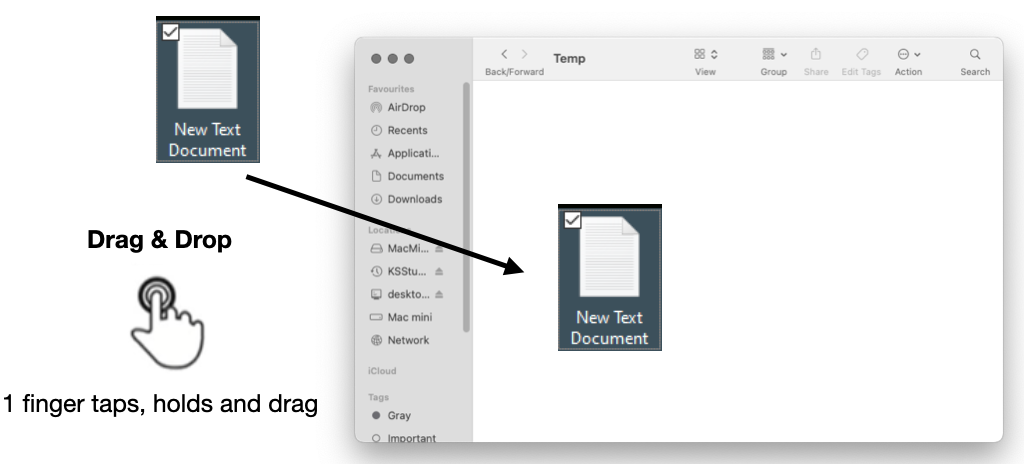
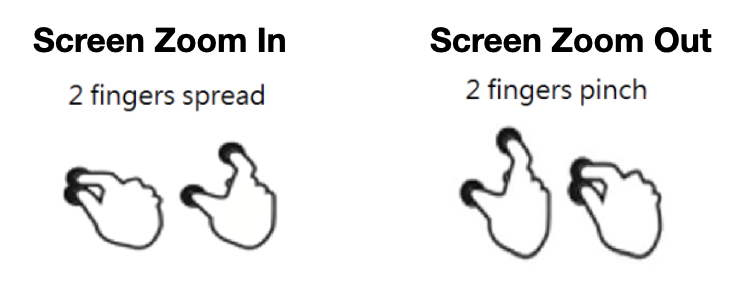
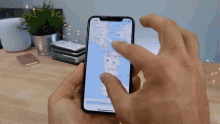
Step 5: Customer Stops sharing
While customer is sharing the local keyboard mouse, he can stop sharing at any time by pressing the STOP button on the desktop. This button is shown on the top middle of customer screen during sharing control.
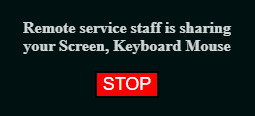
Step 6: Agent service staff STOPs remote control keyboard mouse
While agent is controlling customer keyboard mouse remotely, agent can stop the control through the STOP button on the agent app.
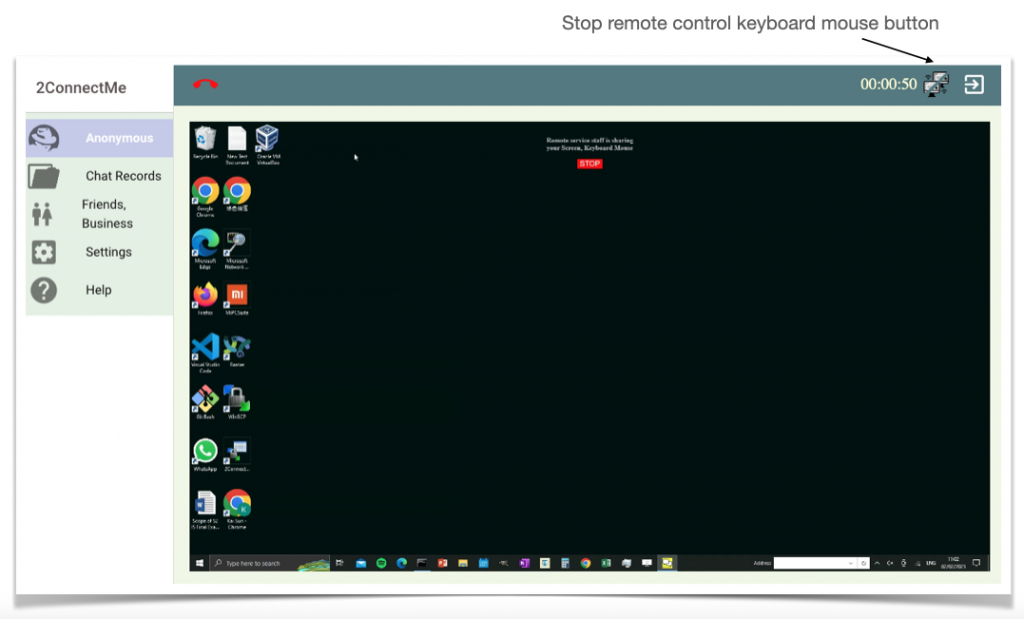
Settings on PC
Keyboard Layout
Since agent use its own local keyboard to simulate the input for the remote customer keyboard, both keyboard layout in macOS or Windows for agent and customer must be the same. It is recommended to use “United States US” layout because the soft-keyboard, for the time being, only supports “United States US keyboard” layout.
For setup of keyboard layout of Windows and macOS, please refer to keyboard setup in Settings of Windows, macOS and Ubuntu.
Permissions required
Connectme Customer app is able to have voice video chat and share lcoal desktop keyboard mouse control with service staff. Operating System will ask user for permissions to access the following devices.
- Camera
- Microphone
- Screen recording to sharing screen
- Accessibility of remote control of keyboard mouse
Microsoft Windows and Ubuntu grants permission by default
Microsoft Windows and Ubuntu grants ConnectMe Customer app with required permissions when the app is installed. Therefore, during the voice video screen sharing chat, there will be NO annoying sysem dialog box asking for user permission to access camera, microphone and screen sharing. The user experience is great.
Apple MacOS grants permission on demand
MacOS does NOT grant any permission to the app when the app is installed. Instead, MacOS will ask user for each permission when the app accesses such system devices, e.g. camera, microphone. A system dialog to ask for user permissions will then be prompted by MacOS accordingly.
The following dialog box prompts illustrate settings required for each permission required.
Permission for accessing camera
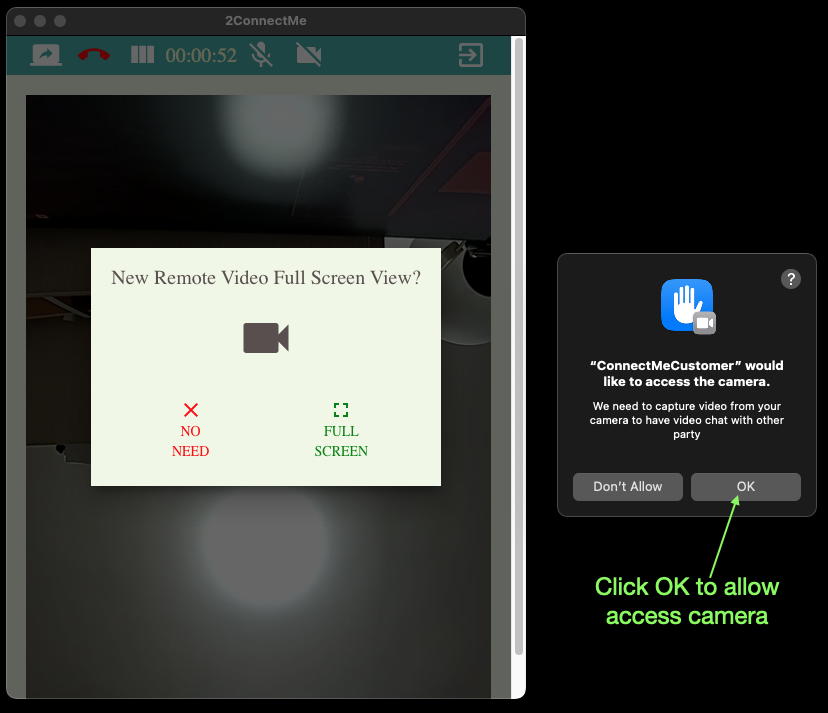
Permission for accessing microphone
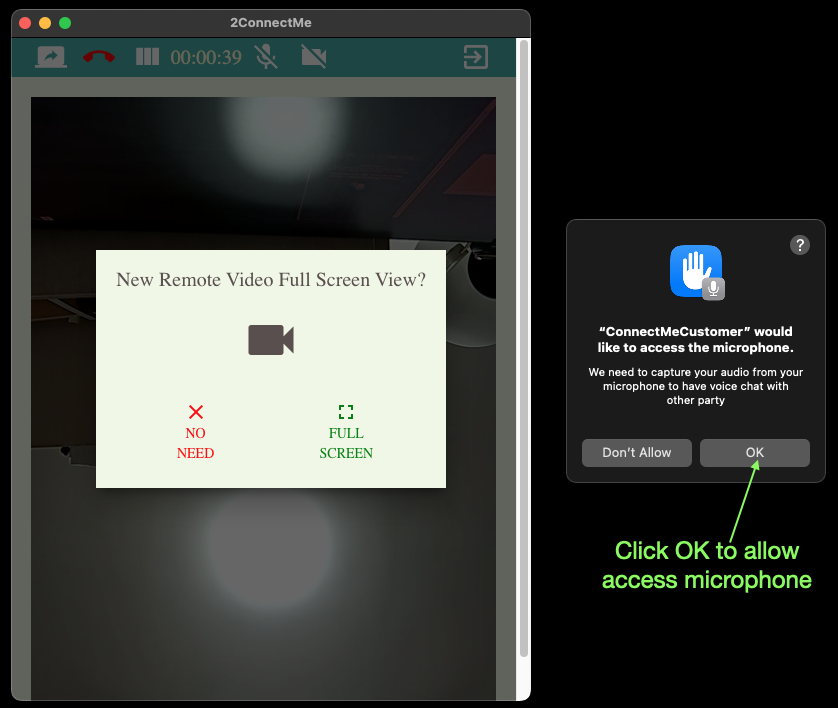
Permissons of screen recording
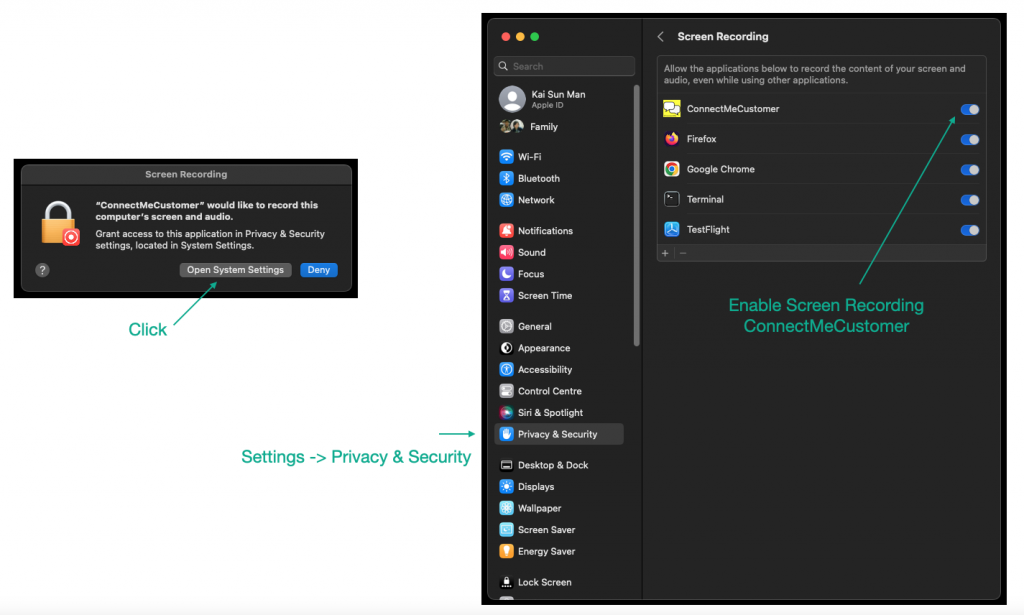
Permissions of accessibility of remote control keyboard mouse
